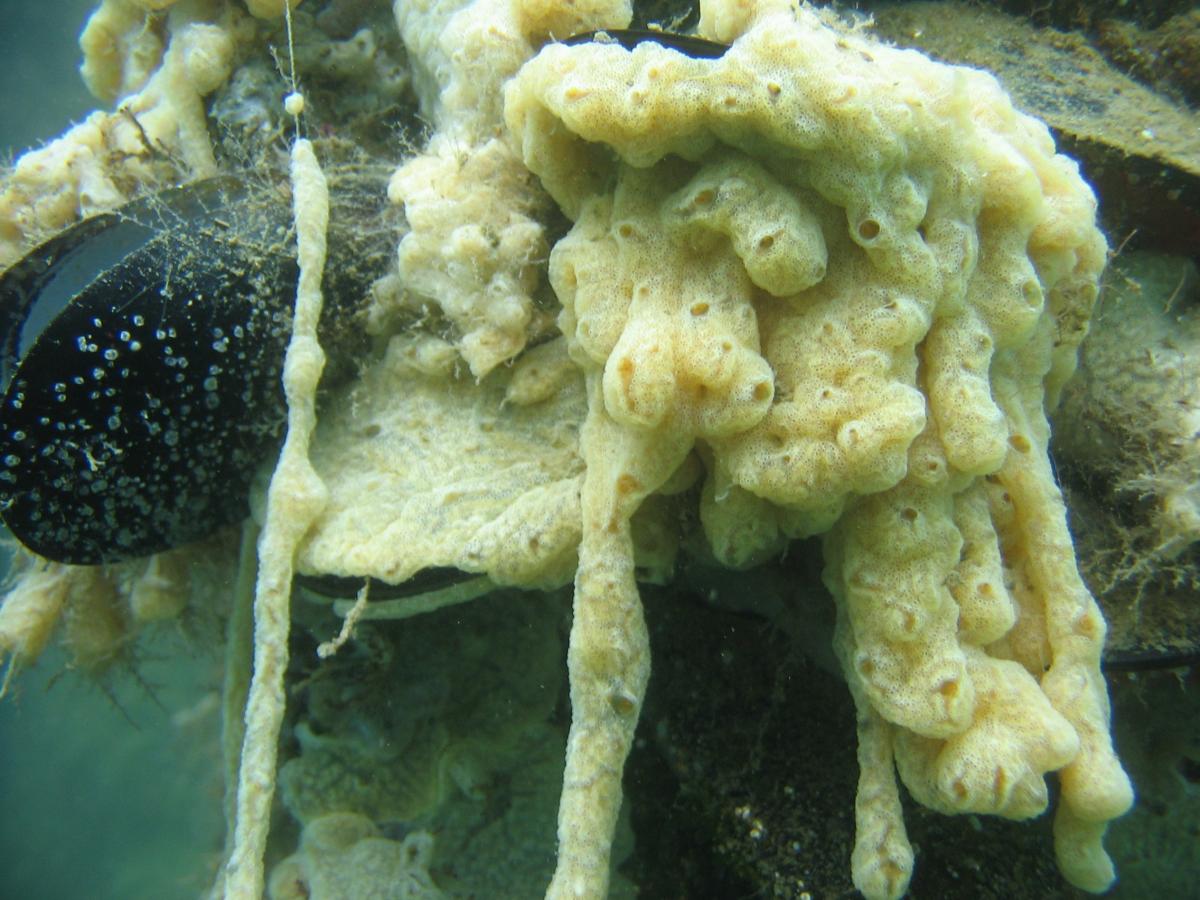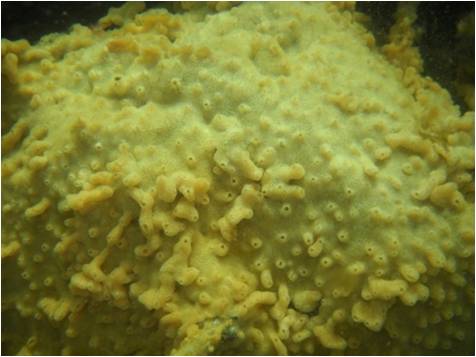
A new species has arrived in Sitka, Alaska. The recent invader is a tunicate called Didemnum vexillum or "D vex" for short. This species is a notorious fouling organism on boats, fishing nets, docks, and buoys. D. vex is of major concern because it grows rapidly and can completely cover aquaculture nets, shellfish beds, and sensitive marine environments. This species spreads through both sexual reproduction and fragmentation, which aids in its ability to colonize new areas rapidly. D. vexillum varies in color from cream, to tan, white or yellow. When growing on a dock, mooring, boat hull, or other hard substrate it may appear to have dripping, bulbous, finger-like tendrils, but when growing on the seafloor it can be more mat-like or irregular and can grow over rocks, sand, kelp, and a variety of living organisms.
D. vex was discovered in Sitka in June 2010 during the first annual Marine Invasive Species Bioblitz (June 12-13), as part of a collaborative effort of the Smithsonian Environmental Research Center (SERC), Alaska Department of Fish and Game (ADF&G), Sitka Tribe of Alaska, University of Alaska (UAS) Southeast, National Oceanic and Atmospheric Administration (NOAA), and San Francisco State University's Romberg Tiburon Center (SFSU-RTC). The Bioblitz expanded on existing monitoring of invasive species in Alaska and brought the issue of introduced species directly to the community who spent many volunteer hours searching for and learning about the species threatening Alaskan waters. The Bioblitz targeted a host of damaging invasive marine invertebrates already present in California with the potential to invade Alaska, including D. vexillum. The Bioblitz surveys were conducted in several harbors and embayments throughout Sitka. The species identity was confirmed by molecular analyses by Sarah Cohen at SFSU-RTC.

There are several means by which D. vexillum could have been introduced to Alaska including ballast water, fouled commercial and recreational boat hulls, relocating fouled piers and docks, fishing equipment, and aquaculture gear. Once introduced, this species can spread vegetativly from fragments being resuspended in the water column or by hitching a ride on mobile organisms. Now that this species has arrived in Sitka, it is important to keep it from spreading to other parts of Alaska. Several agencies are working in conjunction with the Smithsonian to develop a rapid response plan for this invasive (ADF&G, U.S. Fish and Wildlife Service (USFWS), Sitka Tribe of Alaska, UAS Southeast, NOAA, and SFSU-RTC). Efforts are underway to determine the extent of its distribution and test possible management options. If you see this organism in Alaska, please contact Alaska Fish and Game at 1- 877-invasiv or contact Linda McCann at mccannl@si.edu


